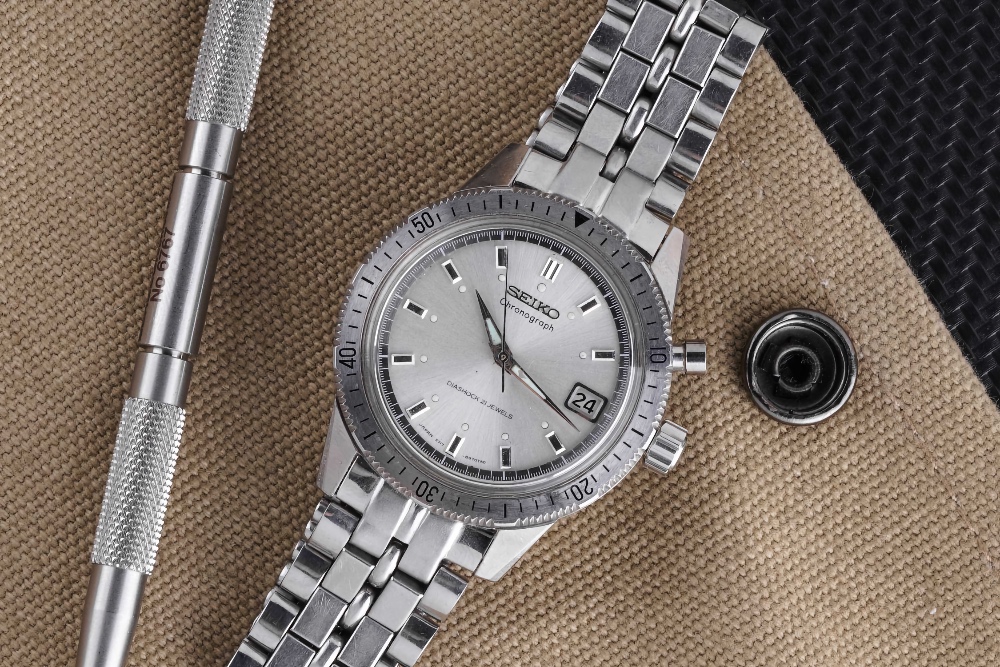1. CONVERSATION: WILHELM SCHMID, CEO OF A. LANGE & SÖHNE

It is often said that watchmaking is done differently in Germany. Nowhere is that saying truer than at A. Lange & Söhne. Unlike some of its contemporaries, A. Lange & Söhne prides itself on not taking shortcuts and not pandering to trends and whims. For example, all watches, regardless of their price and positioning, are finished to the same high and exacting level. The quality of decoration on a time-only Saxonia and a much more complicated Datograph Up/Down is the same. In this interview, CEO Wilhelm Schmid talks about the challenges the brand faced in the past year and how the brand will approach the future, especially with regard to e-commerce.
Source: Watches by SJX
2. STAINLESS STEEL A. LANGE & SÖHNE

Watches don’t make sense. In the highest realms of watchmaking, stainless steel is king. It is well-known that stainless steel Pateks are auction kings, but stainless steel Langes are also extremely sought after. The brand doesn’t speak or share much about them, but in its short history, the brand has made a handful of stainless steel models. Most of you would have probably heard of stainless steel Lange Ones, but did you know they also made stainless steel 1815 service watches to loan VIP clients when they send in their Langes for servicing? They also made a single Tourbillon Pour le Mérite in the most common of metals. Read more about stainless steel Langes in the link below.
Source: Langepedia
3. THE STORY OF SEIKO’S INNOVATIVE CHRONOGRAPHS

When talking about chronographs, we often mention brands like Zenith, Rolex, Omega, and Breitling. However, Seiko was also one of the first brands to put out a self-winding chronograph. In fact, some people are adamant that Seiko was the first and that they beat the Swiss. No matter, the Japanese watchmaker has a rich history of making chronographs. Some noteworthy examples include the 6139-6005, known to fans as the “Pogue” because it was worn by Colonel William Pogue to space, and in doing so became the first self-winding chronograph to go to space. Learn more about the fascinating history of Seiko chronographs in the link below.
Source: Revolution
4. SORRY ABOUT YOUR SLEEP

It’s that time of the year again. Every second Sunday of March, much of the United States moves clocks forward by an hour. And on the last Sunday of March, Britain, France, and Germany follow suit. The idea behind this seemingly random action is so that we have more daylight time during the warmer months. And while that sounds nice, it also causes a lot of complications — so much so that a growing number of groups are considering dropping the practice of daylight saving time. They cite little benefit while causing unnecessary confusion and disrupting our schedules and harming people’s health.
Source: The New York Times
5. NO MORE CHANGING CLOCKS? HISTORY SAYS BE CAREFUL WHAT YOU WISH FOR ON DAYLIGHT SAVINGS TIME.

While there is a growing group that opposes the practice of daylight savings time, it’s worth remembering that the U.S. actually abolished daylight savings back in the 1970s. Because of the energy crisis, the U.S. made daylight savings time permanent in 1974 as a bid to cut down on energy consumption. It was to be a trial run, and many initially welcomed the move. However, when the change was actually made, many of the same people who favored the switch now found themselves wanting daylight savings time back. More sunlight during winter evenings also meant longer, darker mornings. As a result, the U.S. fell back to the practice of observing daylight savings time after the trial.
Source: The Washington Post
